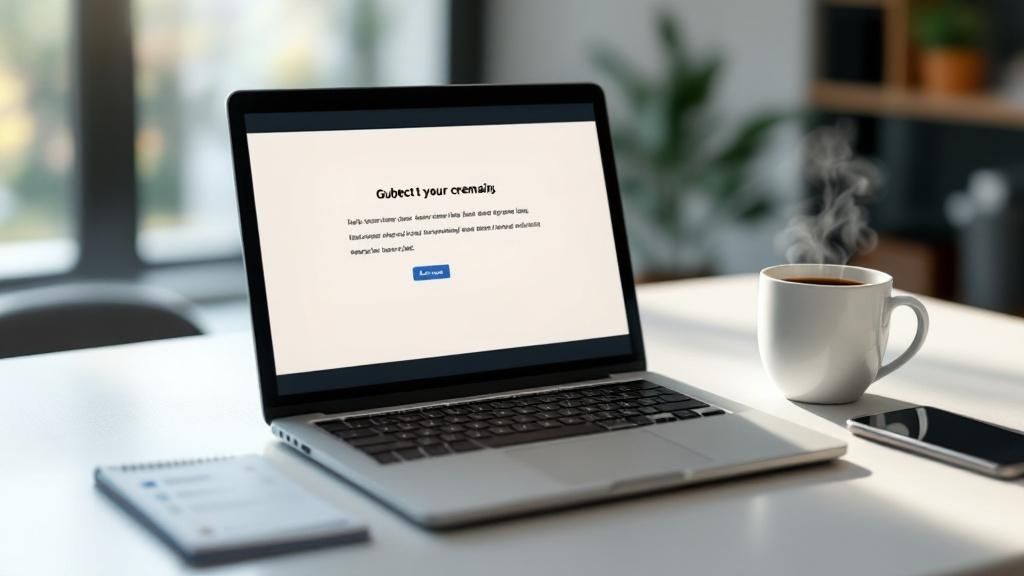To actually get traction and grow your LinkedIn connections, you have to nail two things. First, build a profile that genuinely pulls professionals in.Then, send out connection requests that don't feel like spam, maybe by mentioning a shared interest or a person you both know.
This two-pronged approach turns your profile from a static page into a connection-generating machine. It also makes sure your outreach feels authentic, which dramatically boosts the chances of people hitting "Accept."
Build a Profile That Attracts Quality Connections
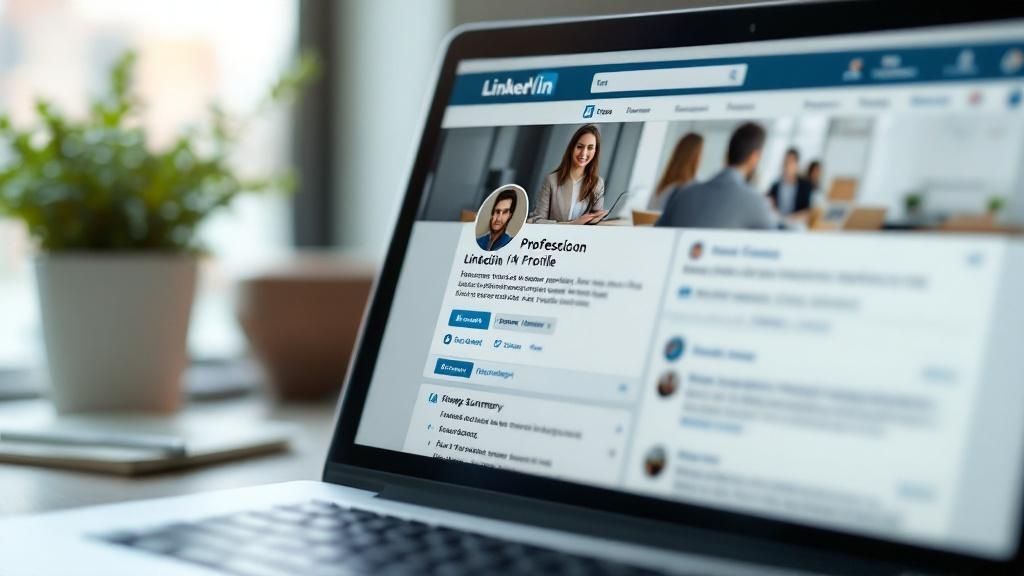
Before you even think about sending a single connection request, let's talk about your profile. It's doing the heavy lifting for you 24/7, acting as your digital handshake and personal brand HQ.
A weak or half-finished profile is the professional equivalent of showing up to a networking event in your pajamas. It kills your credibility before you've even had a chance to say hello.
The goal here is to make people want to connect with you. It all starts with the very first things they see: your picture and your headline.
Craft Your Digital First Impression
Your profile photo needs to be professional, sure, but also approachable. You don't need a stuffy, corporate-style headshot. A high-quality photo where you’re smiling and making eye contact is all it takes to start building trust. Just please, no vacation pics, awkwardly cropped group photos, or blurry selfies.
Next up is your headline. This is arguably the most valuable real estate on your entire profile, and it's so much more than just a job title. A great headline quickly tells people your story and what you bring to the table.
- Bad Headline: "Marketing Manager at ABC Corp"
- Good Headline: "Driving B2B SaaS Growth Through Data-Driven Content Marketing | SEO & Demand Generation"
See the difference? The second one instantly tells me what you do, who you help, and the skills you use to make it happen. It's also packed with keywords that will help you show up in more searches.
Key Takeaway: Your profile isn't a resume—it's a strategic tool. Every piece of it, from your banner image down to your skills, should be fine-tuned to attract the right people and broadcast your professional value.
Write an 'About' Section That Sparks Interest
The 'About' section is your chance to expand on your headline and let your personality shine through. This is where you can move beyond the boring job titles and connect with people on a more human level.
Instead of just listing responsibilities, tell a short story. Talk about your professional journey, what you're passionate about, and the kinds of problems you love to solve.
Break up the text into short, easy-to-read paragraphs. Use bullet points to call out key skills or big wins. And always end with a clear call-to-action, like inviting people to connect or to check out your portfolio.
To really get this right, you should dive deeper into how to optimize your LinkedIn profile for maximum impact. A fully optimized profile doesn't just draw people in; it signals to the LinkedIn algorithm that you're a serious professional, which means you'll get shown to more of the right people. The small details truly make all the difference.
Write Connection Requests People Actually Accept
That generic, default "I'd like to connect on LinkedIn" message? It's the digital version of a limp, awkward handshake. It's a huge missed opportunity.
When you send that default request, you're basically telling the other person you couldn't be bothered to spend 30 seconds finding out who they are. This is exactly where you can get a leg up and stand out from everyone else in their inbox.
A personalized request isn't some complex art form; it just takes a moment of real effort. It shows you respect their time and kicks things off with a human-to-human connection, not just a profile-to-profile one. The whole idea is to turn what could be a cold outreach into a warm, welcome introduction.
The Anatomy of a Winning Request
A great connection request has three main parts. Let's be clear: this isn't a sales pitch. It's not a job application, and it's definitely not your life story. Think of it as a brief, friendly note with some context that makes hitting "Accept" a no-brainer for them.
All it takes is a couple of minutes of research on their profile. Did they just share a really interesting article? Maybe you went to the same university. Or perhaps you genuinely admire a specific project they led. Any of these little details can be the perfect opener.
Here’s a simple framework to follow:
- The Hook: Kick things off by mentioning the specific thing that made you want to reach out. This instantly proves you've done your homework.
- The Bridge: Briefly explain the shared interest or connection. Why them? Why now?
- The Ask: End with a simple, no-pressure closing.
Following this approach changes your request from just another interruption into a thoughtful interaction they'll actually appreciate.
Real-World Examples for Different Scenarios
Okay, enough theory. Let's get practical. The "why" behind your connection request really matters, so your message needs to reflect that. Generic, copy-paste templates always fall flat, but having a few adaptable frameworks in your back pocket can work wonders.
Connecting with an Industry Leader:
"Hi Dr. Evans, I was really impressed by your recent talk on AI ethics at the Tech Innovators Summit. Your point about data sovereignty was especially insightful. I'm passionate about this area and would love to follow your work more closely."
Reaching Out to a Potential Client:
"Hello Sarah, my team and I have been following the great work your company is doing in the renewable energy space. The recent project you announced in Texas is groundbreaking. I specialize in logistics for large-scale energy projects and would be great to connect."
Connecting via a Mutual Acquaintance:
"Hi Mark, I see we're both connected to Jane Smith. She and I worked together at Acme Inc., and she always spoke highly of your expertise in product management. I'm also in the product field and would welcome the chance to connect with you."
Pro Tip: Always, and I mean always, send your request from the person's profile page. Just click the "Connect" button there, which lets you "Add a note." If you try to connect from a search results page, you often don't get the option to personalize it.
If you want to go even deeper on this, our full guide on crafting LinkedIn connection requests that get accepted is packed with more templates and strategies.
Honestly, mastering this one skill is fundamental to growing a quality network. That little thoughtful note is the single best way to boost your acceptance rate and start building real relationships from the very first click.
Use Content to Become a Connection Magnet
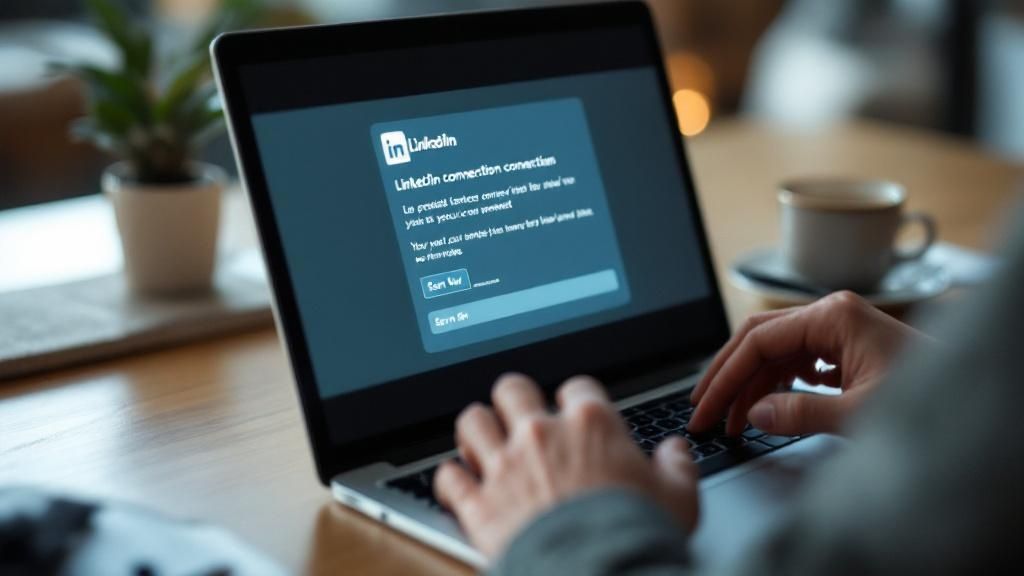
Sending out personalized connection requests is a great active strategy. No doubt about it. But what if you could flip the script and have high-quality connections come to you?
That's the real power of creating content on LinkedIn. This approach turns your profile from a static resume into a dynamic hub of expertise that pulls the right people into your orbit.
It’s not about bragging or shameless self-promotion. It's about being generous with your knowledge, sharing your unique perspective, and adding real value to the conversations already happening in your industry. When you do this consistently, you build a personal brand that people want to be associated with. The result? A steady, organic stream of connection requests from people who are already bought into what you have to say.
Think of it as playing the long game. You become a go-to resource, not just another person asking for something.
Share Your Expertise and Add Value
The secret to great content is pretty simple: be helpful.
Share things that your ideal audience would find useful, interesting, or even a bit provocative. What are the common questions you hear all the time? What are the biggest headaches people in your field are dealing with? Start there.
And you don't need to be a professional writer. Authenticity and genuine value will always win out over perfect prose.
Here are a few simple but effective content formats to get you started:
- Insightful Text-Only Posts: Share a unique observation from your day, a contrarian take on an industry trend, or a lesson you learned the hard way on a recent project. Keep your paragraphs short and use formatting to make it easy to scan.
- Simple Carousels (PDFs): Break down a complex idea into 5-7 simple, visual slides. These are incredibly engaging and get shared a lot. You can whip them up in minutes using tools like Canva.
- Quick Polls: Ask a relevant question to get a quick pulse on what your network is thinking. It's an easy way to spark a conversation.
The opportunity here is massive. LinkedIn has over 300 million active monthly users, but only about 1% of them share content weekly. That tiny group generates a mind-boggling 9 billion impressions. A little effort goes a very long way.
To give your content an extra push, remember that posts with images tend to get double the engagement, and videos can be shared up to 20 times more. If you want to dive deeper, check out these compelling LinkedIn statistics from skrapp.io.
Engage Thoughtfully on Others' Content
Creating your own content is one side of the coin. The other is engaging with what other people are posting. This is easily one of the most underrated ways to get on the radar of influential people in your industry.
But please, don't just drop a "Great post!" or a thumbs-up emoji. That adds nothing.
Instead, write thoughtful comments that actually build on the conversation.
Key Takeaway: Treat your comments like mini-posts. Ask a smart question that makes people think, share a related personal experience, or respectfully offer a different point of view. This shows you're an expert and makes the original poster—and everyone reading the comments—take notice.
For example, if an industry leader posts about a new marketing strategy, you could comment: "This is a great point. We tried a similar approach last quarter and found that segmenting the audience by engagement level first boosted our conversion rate by an extra 15%. Have you seen similar results?"
This kind of interaction doesn't just get you noticed; it builds your reputation as a knowledgeable, collaborative pro. It's a critical part of a solid engagement strategy and works hand-in-glove with the tactics for mastering LinkedIn outreach you might already be using.
When you combine content creation with thoughtful engagement, you create a powerful flywheel effect that will consistently grow your network.
Find Your Niche in LinkedIn Groups and Events
Having great content on your profile is one thing, but you can’t just wait for people to find you. You need to go where your ideal connections are already hanging out. Think of LinkedIn Groups and Events as pre-built ecosystems, full of professionals who share your interests, face similar challenges, and are looking for solutions.
It’s all about finding the right communities. Don't get distracted by huge member counts. A group with 100,000 members and zero real conversation is a ghost town. What you're looking for is a smaller, active group where people are actually talking to each other. That’s the goldmine.
Your mission is to become a valued member of the community before you start pitching. That means jumping into discussions, answering questions, and sharing what you know without an immediate agenda. When you do that, connection requests become a natural byproduct of the respect and context you've built.
Become a Valued Voice in Niche Communities
Joining the group is just the first move on the board. To really make an impact, you have to participate with intention. For the first few days, just listen. Get a sense of the community's vibe, the hot topics, and who the key players are.
When you're ready to contribute, make it count. Skip the generic "great post!" comments. Instead, add real value. Share a relevant article you found, offer a concrete solution to someone's problem, or ask a sharp question that gets people thinking.
Expert Tip: Don't just stick to groups—pay close attention to virtual events on LinkedIn. The attendees and speakers have literally raised their hands to say, "I am interested in this specific topic right now." Connecting with them is one of the most effective ways to find highly relevant people.
LinkedIn is growing at a staggering rate, projected to cross 1 billion users by 2025 and adding 2-3 new members every second. A huge driver of this growth is from Millennials (47.3%) and Gen Z (28.7%), two demographics that are incredibly active in groups and events. You can dig into more of these LinkedIn statistics on wavecnct.com to see the shift. By engaging in these spaces, you’re plugging directly into the platform's most dynamic user base.
For anyone in sales, this community-first approach is a game-changer. If you want a deeper dive, our guide on leveraging LinkedIn Groups for targeted lead generation maps out the entire strategy.
Drive Engagement Through Smart Participation
The content you share inside a group is just as important as what you post on your main feed. In a crowded group discussion, visual content can be your secret weapon to stand out.
Think about how different post types perform. It’s no secret that some formats just grab more eyeballs than others.
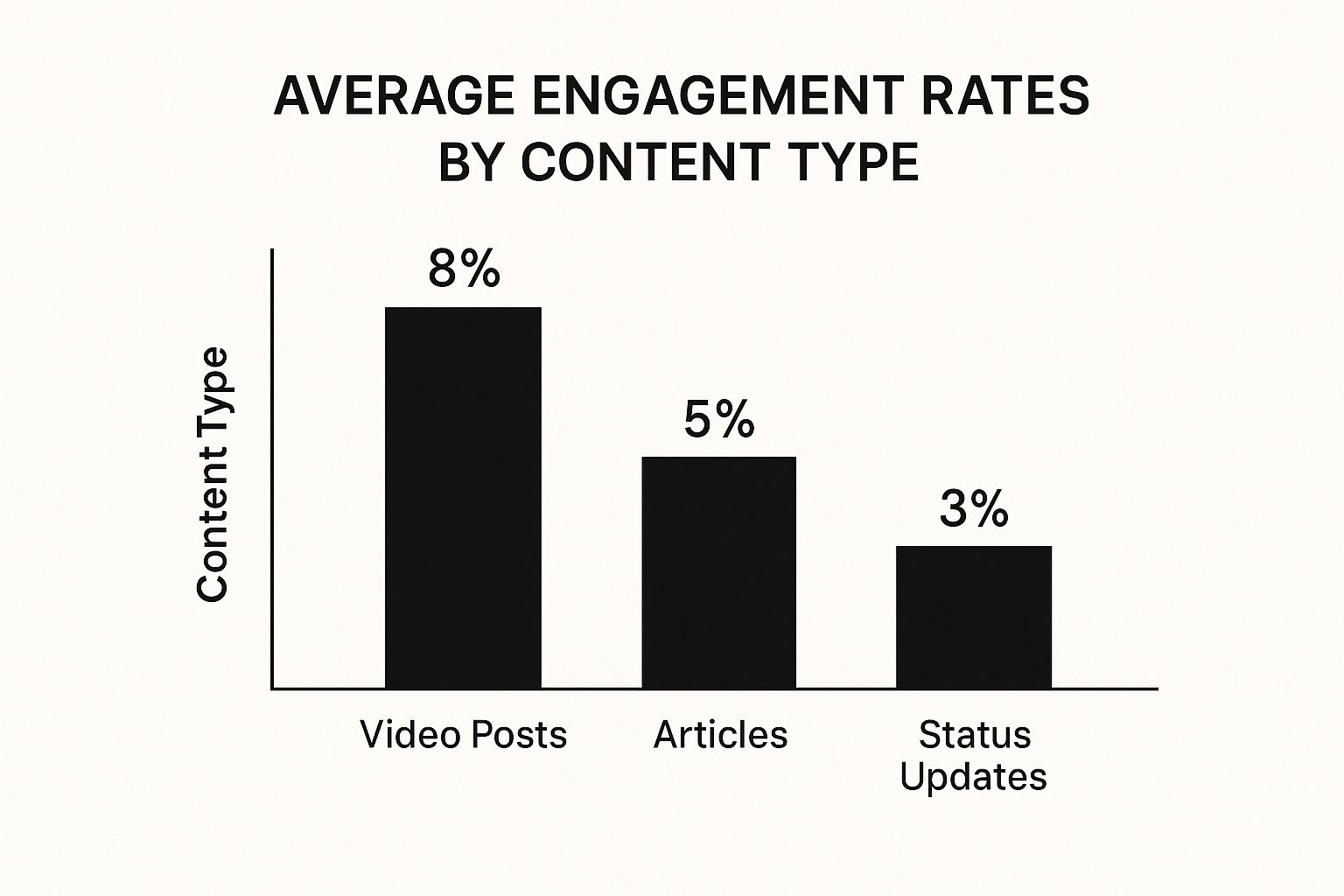
As you can see, video is in a league of its own when it comes to engagement. Mixing up your media is crucial for capturing attention.
By becoming a helpful, visible, and valuable member of these niche communities, you stop chasing connections. Instead, they start coming to you.
Once you've nailed down the basics of optimizing your profile and sending out personalized notes, it's time to put your networking on the fast track. LinkedIn has some seriously powerful features that, if you know how to use them, can slash the time it takes to find and connect with the right people.
Instead of just typing names into the search bar, you need to become a power user of the platform's advanced search. These filters are your best friend for getting hyper-specific.
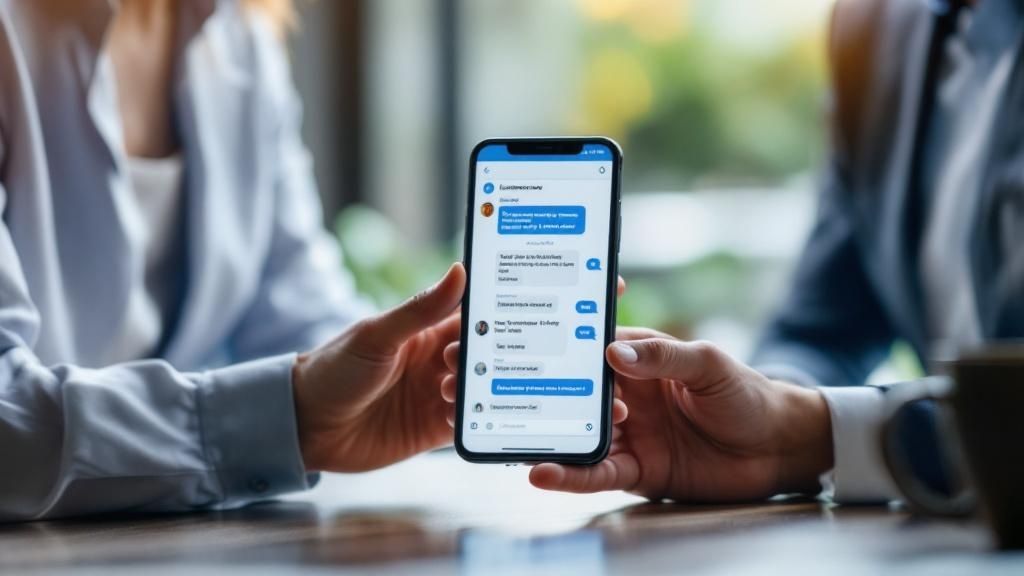
Master the Art of Advanced Search
The regular search bar is great for finding people you already know. Advanced search is where you find the people you should know. It lets you layer different filters to pinpoint professionals with incredible precision.
Think way beyond just job titles. You can zero in on people by:
- Company: Find every single person who works at a specific company you're targeting.
- Past Company: A personal favorite. Discover people who used to work where you did but are now in senior roles somewhere else—instant warm connection.
- School: Tap into your alumni network. It’s one of the easiest ways to get a warm introduction.
- Industry: Narrow your search to a specific sector like "Financial Services" or "Computer Software."
- Keywords: This is where it gets really interesting. Search for specific skills or expertise people mention in their profiles, like "SaaS sales" or "content strategy."
This level of detail means you stop wasting time. You can build highly targeted lists of your ideal connections, which makes your outreach far more efficient and a heck of a lot more effective.
Expert Tip: Don't sleep on the "People Also Viewed" sidebar on someone's profile. This is LinkedIn's own algorithm handing you a curated list of similar professionals on a silver platter. It's an absolute goldmine for finding key players in a niche you might have otherwise missed.
To Go Premium or Not to Go Premium?
So, is LinkedIn Premium actually worth the money? Honestly, it all comes down to your goals. If you're just a casual networker, the free version is more than enough. But if you're serious about using LinkedIn for lead generation or making a big career move, the paid features can give you a major advantage.
The numbers don't lie. LinkedIn's user base is massive, growing from 644 million in 2019 to a projected 1.15 billion by 2025. And within that, the number of premium members has ballooned to over 175 million. That tells you a lot of professionals are finding real value in the paid tools.
The biggest perk with Premium is getting a set number of InMail credits each month. InMails let you message anyone on the platform, even if they're not a connection. This is a game-changer for reaching out to high-value contacts without having to go through the standard connection request dance.
And while this guide is all about organic growth, if you need to pour gasoline on the fire, paid advertising is a powerful next step. For that, you might even consider bringing in pros who offer LinkedIn Ads management services to make sure you're getting the most bang for your buck.
Ultimately, using these advanced tools is about working smarter, not just harder. It's about strategically building the network that will open doors and propel you forward.
Got Questions About Growing Your Network?
As you start getting serious about growing your LinkedIn network, it's totally normal to have questions about the "unwritten rules" of the platform. It can feel a bit like walking a tightrope, trying to balance strategy with etiquette, but the answers are usually more straightforward than you think.
Getting these little details right from the start helps you build relationships the right way and avoid those classic missteps that can stall your momentum. Here are the straight-up answers to the questions we get asked all the time.
How Many Connection Requests Should I Really Be Sending?
This is a big one. While LinkedIn doesn't publish its exact limits, they definitely have a weekly cap on connection requests to keep spam under control. But honestly, you shouldn't be trying to hit that limit anyway.
Instead of spraying and praying, focus on quality. A great target is sending 5–10 highly personalized requests each day. This approach keeps your account in good standing, but more importantly, it gets much better results. A few well-crafted, thoughtful requests will always beat a hundred generic ones, hands down.
Should I Just Accept Every Connection Request I Get?
Definitely not. A large, random network is mostly just noise. A quality network, on the other hand, is a powerful professional asset.
Before you hit "Accept," take 15 seconds to vet the person's profile. I run through a quick mental checklist:
- Are they in my industry or a related field? Or a role I want to learn more about?
- Does their profile look legitimate and professional? (A real photo and a decent headline go a long way).
- Can I see a clear reason why we should connect?
Only accepting relevant requests keeps your newsfeed valuable and turns your network into a resource you can actually use. If their content looks interesting but a direct connection feels off, you can always just "Follow" them instead. It's a great middle-ground.
My Two Cents: Treat your network like a curated gallery, not a storage unit. You're the editor of your professional circle. A highly relevant network of 500 people you can actually engage with is infinitely more powerful than a random one with 5,000.
Okay, They Accepted. Now What?
Don't just let that new connection sit there and go cold! The moment someone accepts your request is the golden window to turn a simple "add" into a real conversation.
All it takes is a brief, friendly follow-up message. Thank them for connecting. Seriously, it doesn't need to be some elaborate sales pitch.
Something simple like, "Thanks for connecting, Sarah! Really appreciate it. I'm looking forward to seeing your work on my feed," is perfect. It's a small step, but it's the one that moves the needle from a static connection to the beginning of a genuine professional relationship.
Ready to put these strategies into play and scale your outreach without losing that personal touch? Salesloop.io helps you automate your campaigns, so you can find and engage high-value prospects without spending all day on LinkedIn. Start building your pipeline today.


